#Masoala Hall
Text

















National Banana Lovers Day
Today we celebrate the banana—the most popular fruit in the United States and around the world. The average person eats about 100 of them a year, which comes out to about 25 to 33 pounds worth. They are the cheapest fruit and are also one of the most perishable. They may appear to grow on trees, but they actually grow on plants that have 10 to 20 feet high trunks. The banana plant is an herb—the largest herb plant, actually—and bananas are its fruit. The plant grows in the tropics.
Each banana is about 100 calories and is high in fiber and potassium, which are good for treating high blood pressure, ulcers, calcium loss, and some cancers. Bananas are also a good source of manganese, vitamin B6, and vitamin C. There are over 1,000 varieties of bananas, but the kind most eaten in the United States is the Cavendish. The Gros Michel was once the most commonly eaten, but in the 1950s it fell victim to a fungus that causes Panama disease, so farmers had to switch to the Cavendish.
Bananas are the oldest cultivated fruit and likely were first domesticated in Southeast Asia. Centuries later, shortly after Europeans arrived in the Western Hemisphere, they were brought from the Canary Islands to Hispaniola. They then spread to other islands, before making it to the mainland. They didn't become widespread in the United States until the end of the nineteenth century. They were so popular in American cities in the early twentieth century that banana peels on the ground became a nuisance and an issue that had to be dealt with. This led to the gag of slipping on banana peels, which was frequently featured in early movies.
Bananas were popularized in part by the United Fruit Company, which was founded in the late nineteenth century, and is now known as Chiquita. They encouraged people to eat bananas with milk and corn flakes, and they put out banana recipe books until the end of the 1950s. The books oftentimes contained adventurous recipes and aimed to get people to eat bananas at every meal. They cast the banana not only as something sweet but also as something similar to a vegetable, like a potato. One example of a recipe from the book is ham banana rolls with cheese sauce. Nowadays, bananas are still eaten in many different ways. Besides being enjoyed plain, they may be fried, may be included in sandwiches, and may be used in pies, puddings, muffins, breads, and cakes—among other things. On National Banana Lovers Day, the sky's the limit as to what can be done with them!
How to Observe National Banana Lovers Day
You should be eating as many bananas and foods made with bananas as possible today. While doing so, perhaps you could read Banana: The Fate of the Fruit That Changed the World. You could pick up an old United Fruit/Chiquita recipe book to help you decide what to eat, but we have also put together some recipe ideas for you here as well:
Elvis Presley's fried peanut butter and banana sandwich
Grilled banana s'mores
Fried sweet bananas
Honey-rum grilled bananas
Eat bananas with corn flakes and milk, just as United Fruit once encouraged everyone to do.
Try bananas in milk, with a little bit of sugar and a few drops of vanilla extract.
Banana bread
Banana muffins
Banana cake
Banana split
Banana cream pie
Banana pudding
Banana cocktails
Banana smoothies
Make some matooke, which is the most popular banana dish in the world and from Uganda.
Make Bananas Foster, a New Orleans specialty.
Make the original United Fruit ham banana rolls with cheese sauce!!!
Source
#Banana Chocolate Mousse#Banana Split#Banana Nut Donut#Banana Annies#Strawberry Banana Rendezvou#Chocolate Banana Milkshake#Banana Cream Pie#travel#original photography#vacation#tourist attraction#Switzerland#USA#Canada#food#restaurant#National Banana Lovers Day#NationalBananaLoversDay#27 August#flora#fruit#Zoo Zürich#Masoala Hall#St. Augustine#Miami Beach#New Orleans#Tamal Cubano en Hoja
2 notes
·
View notes
Video
nice place by Chris Frank
8 notes
·
View notes
Text
19.4.2021 | Wipkingen | 15.30h
Seine WG, sagt S., habe langsam genug von all den Interventionen, die er wegen Unterrichtsprojekten in den letzten Wochen im gemeinsamen Wohnzimmer durchgeführt habe. Für das Ethnographieseminar hat er alle Zimmerpflanzen entfernt und sein eigenes Zimmer zu einer Art Masoala-Halle gemacht.
2 notes
·
View notes
Photo

Auf Tuchfühlung mit dem Camäleon in der Masoala Halle im Züri Zoo. Zusammen mit gefühlt weiteren 100'000 Schweizer Familien. Trotzdem toll... // #masoalahalle #zooh #zuerich #zoo #chameleon #zoowetter #familytrip # Switzerland (hier: Zürich, Switzerland)
85 notes
·
View notes
Text
Masoala Hüttchen – Garden Tour
Masoala Hüttchen – Garden Tour

Bildquelle
Während ich in meinem Treibhäuschen mit wunden Fingern die letzten Schrauben anzog, musste ich ans Tropenhaus im Zürcher Zoo, die Masoala-Halle denken. Es ist da tropisch warm, feucht und knapp 10 Jahre nach der Eröffnung üppig grün. Natürlich kann man zwischen all den Pflanzen unzählige Tiere sichten.
The picture above is from the Zurich Zoo. It’s the Masoala Hall, home of a tropical…
View On WordPress
0 notes
Photo

STAY-AT-HOME MONDAY Very colorful, very slow moving and very fast catching prey = Panther Chameleon, my favorite reptile 😊. This is especially for all my friends in Switzerland. The picture was taken at Masoala Hall at the Zurich Zoo. Many of us have to stay home in this worldwide crisis. So I thought you might enjoy to receive a wildlife image every day of the week until things are back to normal. #Christiansperkaphotography @christiansperkaphotography #zoozürich @zoozuerich (at Zoo Zürich) https://www.instagram.com/p/B-WED_3g_TN/?igshid=aj1ptf5u4jkk
0 notes
Text

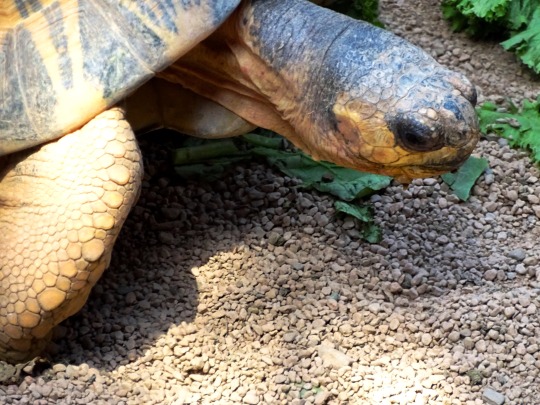



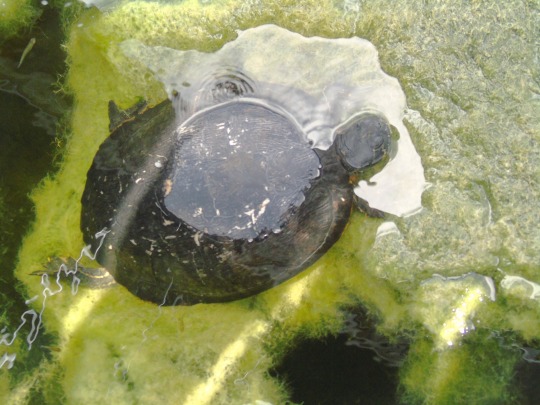
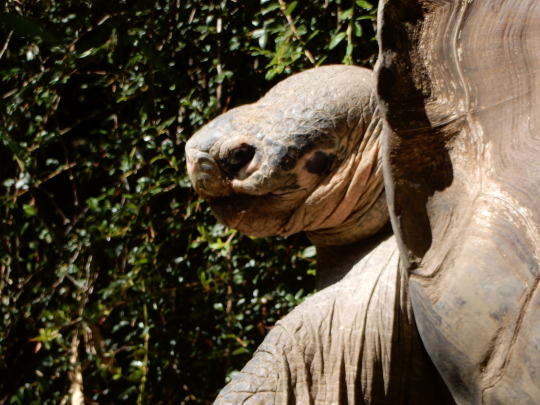

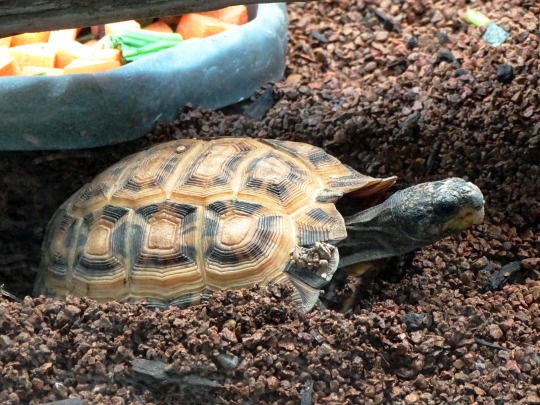



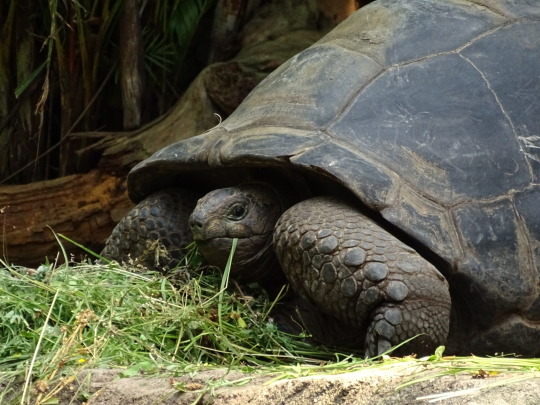




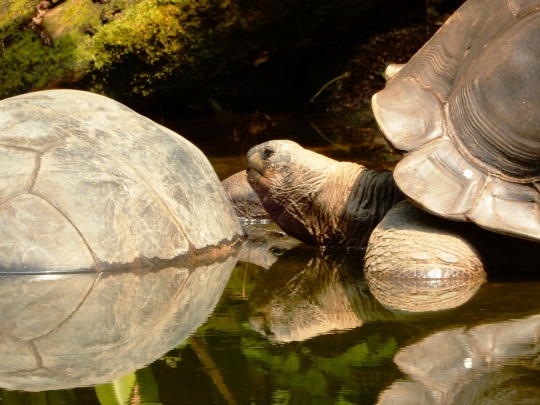

Turtle Adoption Day
Turtle Adoption Day is a "day of action for the protection of endangered reptiles." Specifically, the day supports the welfare of turtles. It appears to have been created by a woman named Christine Shaw, who made a blog post on November 25, 2011, on the website of Found Animals, an animal welfare organization that works to find new homes for distressed and abandoned animals. The day was first observed two days later.
Having a turtle as a pet is a large undertaking and can be a lot of work. Turtles have a long lifespan, meaning having one as a pet is a long-term commitment. This may not be ideal for many prospective owners. Turtles also need specialized—and many times expensive—care when it comes to their food, water supply, and cages, which also may not make them ideal pets for many. Additionally, turtles are often carriers of salmonella. Generally, conservation organizations take the view that turtles belong in the wild, not in homes as pets.
Still, many people do get turtles as pets, and Turtle Adoption Day is about reacting positively to some negative decisions others have made in this regard. Some people who get turtles as pets treat them like throw-away pets: they purchase baby turtles, view them as mini-turtles, and give them away or release them into the wild when they grow. When turtles are released into the wild, their chances of survival are slim. Additionally, many turtles are endangered species and are hunted by humans and have threatened habitats. Turtles released in the wild can also become invasive species. They can multiply, and may then damage flora and fauna. But, some turtle owners take them to animal shelters when they get bigger and they don't know how to care for them, instead of releasing them into the wild. It is these turtles that Turtle Adoption Day works to protect.
Turtles live in almost all climates around the world, and are found on every continent except Antarctica. Most species are found in southeastern North America and South Asia. Only five species can be found in Europe. Turtles are part of the order of Testudines, an order that also includes tortoises and terrapins. Testudines are split into two suborders: Cryptodira and Pleurodira. Most turtles are Cryptodira. The main difference between the two is that Cryptodira retract their heads straight back into their shells, while Pleurodira fold their necks to the side when they retract their heads. However, sea turtles, which are Cryptodira, are unable to retract their heads into their shells. Turtles are then split into 13 families and 75 genera, and there are over 300 species in total.
Turtles spend most of their time in the water. Freshwater turtles live in ponds and lakes, coming on land to bask in the sun. Sea turtles spend most of their time in the ocean, coming onshore to lay eggs on the sand. Most of these webbed-feet reptiles have hard shells that protect them from predators. The top part of their shell is called a carapace and the bottom is called a plastron. The carapace is made up of about 60 bones, and is covered with plates made of keratin called scutes. Besides hard-shelled turtles, there are are also soft-shelled turtles and leatherbacks, which have a thick skin covering their carapace.
Turtles are not very social animals. They are most active during the day, when they spend their time searching for food. Most are omnivores, eating animals such as fish, insects, mollusks, crayfish, snakes, frogs, worms, clams, and other turtles, as well as grasses, algae, and other plants. Their diet varies depending on their species, with some subsisting on a mostly vegetarian diet.
Like birds, turtles have beaks and no teeth. They also are egg-laying animals. After digging a nest on land in sand or dirt, they lay their eggs and leave; they don't nurture their young once they are born. Turtles lay between 20 and 200 eggs at a time, depending on their species. Most of their eggs are eaten by carnivores before they hatch, and many are eaten after they are hatched, as the baby turtles do not yet have fully-developed shells to protect themselves.
Turtles vary in size, but some may grow very large. The largest freshwater turtle in North America is the alligator snapping turtle, which can grow up to 2.5 feet in length and weigh up to 200 pounds. The largest sea turtle is the leatherback turtle, which can grow to about 4.5 to 5.25 feet in length and weigh between 600 and 1500 pounds. The largest soft-shelled turtle is the Yangtze giant softshell turtle, which can grow up to 3.6 feet across and weigh as much as 309 pounds.
Many species of turtles are threatened, endangered, or critically endangered. Additionally, many turtles who were once pets have ended up in shelters because their owners weren't able to properly care for them. This makes it even more necessary that there is a day dedicated to caring for and protecting turtles. Today, on Turtle Adoption Day, we do our part to protect turtles by adopting those without homes.
How to Observe Turtle Adoption Day
The most appropriate way to observe the day is to adopt a turtle that was once someone's pet. Turtles can be adopted through Found Animals or Petfinder, or through a reptile rescue organization. They can also be found in local listings such as Craigslist, as well as at local animal shelters. By giving them a new and proper home, you can help preserve one turtle's life, and help protect turtles in general, many species of which face endangerment. If you can't provide a home for a turtle, you could donate to a reptile rescue organization.
Before you adopt a turtle, it is imperative that you are prepared to do so. You must make sure you know what type of environment turtles need in order to live in captivity, and you must have a large enough habitat for your new turtle to live. For example, turtles need at least ten gallons of water per one inch of shell, and for each additional turtle, you need another ten to twenty gallons of water. They need a dry basking area where they can crawl around and dry off, they need access to lamps that give off heat and UVA and UVB rays, they need a submersible heater to keep water at a warm enough temperature, and they need a water conditioning solution and a filter. When adopting a turtle you must also remember that having one as a pet is a long-term commitment, they can be a lot of work, they can take up a lot of your time, and they can be expensive.
Source
#aldabra giant tortoise#Masoala Hall#Zoo Zürich#Zurich#New York City#animal#reptile#original photography#day trip#travel#vacation#tourist attraction#Red-eared Slider#Bronx Zoo#my favorite zoo#USA#TurtleAdoptionDay#TurtleSponsorshipDay#27 November#Giant South American River Turtle#Radiated tortoise#Spider tortoise#Florida#Florida Softshell Turtle#Green Cay Nature Center & Wetlands#East African black mud turtle
2 notes
·
View notes
Photo










Turtle Adoption Day
Turtle Adoption Day is a "day of action for the protection of endangered reptiles." Specifically, the day supports the welfare of turtles. It appears to have been created by a woman named Christine Shaw, who made a blog post on November 25, 2011, on the website of Found Animals, an animal welfare organization that works to find new homes for distressed and abandoned animals. The day was first observed two days later.
Having a turtle as a pet is a large undertaking and can be a lot of work. Turtles have a long lifespan, meaning having one as a pet is a long-term commitment. This may not be ideal for many prospective owners. Turtles also need specialized—and many times expensive—care when it comes to their food, water supply, and cages, which also may not make them ideal pets for many. Additionally, turtles are often carriers of salmonella. Generally, conservation organizations take the view that turtles belong in the wild, not in homes as pets.
Still, many people do get turtles as pets, and Turtle Adoption Day is about reacting positively to some negative decisions others have made in this regard. Some people who get turtles as pets treat them like throw-away pets: they purchase baby turtles, view them as mini-turtles, and give them away or release them into the wild when they grow. When turtles are released into the wild, their chances of survival are slim. Additionally, many turtles are endangered species and are hunted by humans and have threatened habitats. Turtles released in the wild can also become invasive species. They can multiply, and may then damage flora and fauna. But, some turtle owners take them to animal shelters when they get bigger and they don't know how to care for them, instead of releasing them into the wild. It is these turtles that Turtle Adoption Day works to protect.
Turtles live in almost all climates around the world, and are found on every continent except Antarctica. Most species are found in southeastern North America and South Asia. Only five species can be found in Europe. Turtles are part of the order of Testudines, an order that also includes tortoises and terrapins. Testudines are split into two suborders: Cryptodira and Pleurodira. Most turtles are Cryptodira. The main difference between the two is that Cryptodira retract their heads straight back into their shells, while Pleurodira fold their necks to the side when they retract their heads. However, sea turtles, which are Cryptodira, are unable to retract their heads into their shells. Turtles are then split into 13 families and 75 genera, and there are over 300 species in total.
Turtles spend most of their time in the water. Freshwater turtles live in ponds and lakes, coming on land to bask in the sun. Sea turtles spend most of their time in the ocean, coming onshore to lay eggs on the sand. Most of these webbed-feet reptiles have hard shells that protect them from predators. The top part of their shell is called a carapace and the bottom is called a plastron. The carapace is made up of about 60 bones, and is covered with plates made of keratin called scutes. Besides hard-shelled turtles, there are are also soft-shelled turtles and leatherbacks, which have a thick skin covering their carapace.
Turtles are not very social animals. They are most active during the day, when they spend their time searching for food. Most are omnivores, eating animals such as fish, insects, mollusks, crayfish, snakes, frogs, worms, clams, and other turtles, as well as grasses, algae, and other plants. Their diet varies depending on their species, with some subsisting on a mostly vegetarian diet.
Like birds, turtles have beaks and no teeth. They also are egg-laying animals. After digging a nest on land in sand or dirt, they lay their eggs and leave; they don't nurture their young once they are born. Turtles lay between 20 and 200 eggs at a time, depending on their species. Most of their eggs are eaten by carnivores before they hatch, and many are eaten after they are hatched, as the baby turtles do not yet have fully-developed shells to protect themselves.
Turtles vary in size, but some may grow very large. The largest freshwater turtle in North America is the alligator snapping turtle, which can grow up to 2.5 feet in length and weigh up to 200 pounds. The largest sea turtle is the leatherback turtle, which can grow to about 4.5 to 5.25 feet in length and weigh between 600 and 1500 pounds. The largest soft-shelled turtle is the Yangtze giant softshell turtle, which can grow up to 3.6 feet across and weigh as much as 309 pounds.
Many species of turtles are threatened, endangered, or critically endangered. Additionally, many turtles who were once pets have ended up in shelters because their owners weren't able to properly care for them. This makes it even more necessary that there is a day dedicated to caring for and protecting turtles. Today, on Turtle Adoption Day, we do our part to protect turtles by adopting those without homes.
How to Observe Turtle Adoption Day
The most appropriate way to observe the day is to adopt a turtle that was once someone's pet. Turtles can be adopted through Found Animals or Petfinder, or through a reptile rescue organization. They can also be found in local listings such as Craigslist, as well as at local animal shelters. By giving them a new and proper home, you can help preserve one turtle's life, and help protect turtles in general, many species of which face endangerment. If you can't provide a home for a turtle, you could donate to a reptile rescue organization.
Before you adopt a turtle, it is imperative that you are prepared to do so. You must make sure you know what type of environment turtles need in order to live in captivity, and you must have a large enough habitat for your new turtle to live. For example, turtles need at least ten gallons of water per one inch of shell, and for each additional turtle, you need another ten to twenty gallons of water. They need a dry basking area where they can crawl around and dry off, they need access to lamps that give off heat and UVA and UVB rays, they need a submersible heater to keep water at a warm enough temperature, and they need a water conditioning solution and a filter. When adopting a turtle you must also remember that having one as a pet is a long-term commitment, they can be a lot of work, they can take up a lot of your time, and they can be expensive.
Source
#aldabra giant tortoise#Masoala Hall#Zoo Zürich#Zurich#New York City#animal#reptile#original photography#day trip#travel#vacation#tourist attraction#Red-eared Slider#Bronx Zoo#my favorite zoo#USA#TurtleAdoptionDay#TurtleSponsorshipDay#27 November#Giant South American River Turtle#Radiated tortoise#Spider tortoise#Florida#Florida Softshell Turtle#Green Cay Nature Center & Wetlands#East African black mud turtle
10 notes
·
View notes
Photo





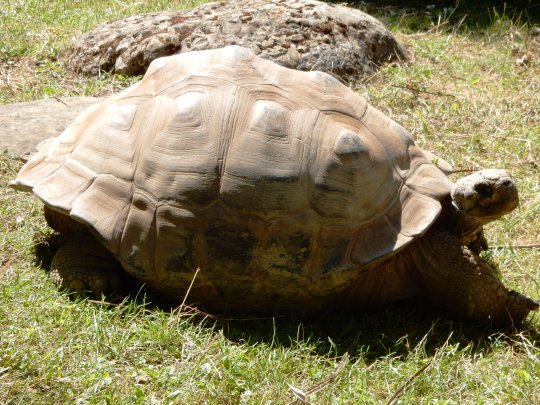


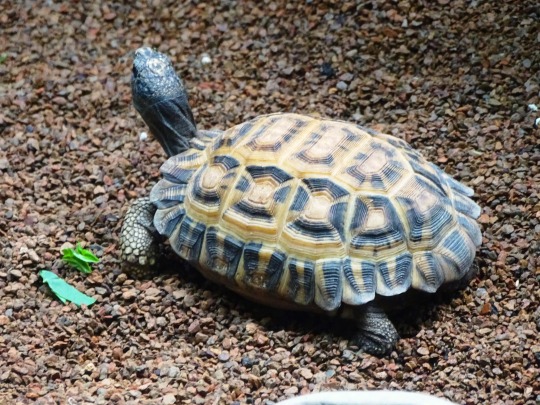
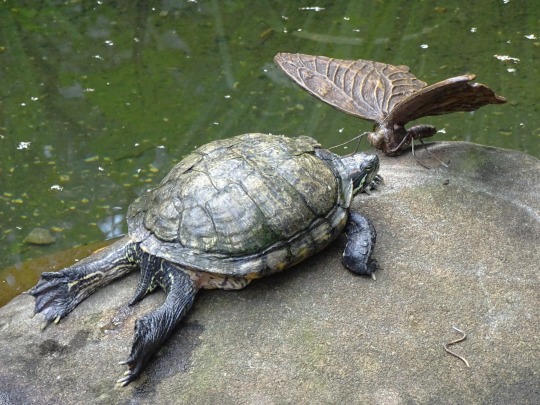
World Turtle Day
Get in touch with the American Tortoise Rescue to see how you can do your part to protect and preserve the wonderful turtles and tortoises in the world.
We hear about them in parables of being slow and plodding, steady and methodical, and being occasionally obsessed with Ninjitsu, news reporters, and pizza. We are, of course, talking about Turtles!
Turtles are a type of reptile that exists in many environments throughout the world and have found their way into literature, poetry, and parable throughout the world’s history. World Turtle Day celebrates these noble reptiles and their place in the world and encourages people to take action to help protect both the common pet turtle and the ever endangered sea turtle.
History of World Turtle Day
Well, the first thing to know is that Turtles and Tortoises are not the same thing, though this day is dedicated to celebrating and protecting both. First created in 1990 by American Tortoise Rescue, World Turtle day recognizes that some species of our hard (and soft!) shelled friends are suffering and almost on the edge of extinction due to environmental hazards, issues with hunting and harvesting of their eggs.
American Tortoise Rescue was created by Susan Tellem and Marshall Thompson, a married pair of animal activists who had a particular passion for tortoises. We all have to have something that drives us in this life, and for these two it was bonding over animal right’s activist work. Don’t think these two are just closet hippies with an overwhelming adoration for all things shelled and scaly.
Susan is deeply involved with television arts & sciences and the public relations society of America while being a partner in Tellem Grody Public Relations Incorporated. They organize charity collections and works around the world to help protect these amazing critters, and created World Turtle Day to get everyone involved and spread awareness of the shrinking habitat and declining numbers of these sensitive creatures.
So what is the difference between turtles and tortoises? Although they are both reptiles, the main difference between the two is that turtles live in the water at least some of the time, while tortoises live on the land. Because they live in the water, turtles have streamlined and mostly flat shells, while tortoises often have larger and more domed ones.
Our tortoise friends can also live longer than their reptilian cousins. Tortoises can live over 300 years, although their average lifespan can go up to around 150 years. Turtles live up until the age of 40, although one record-breaking turtle almost lived to the age of 90!
Learning the differences between our reptile friends is just one of the educational activities that World Turtle Day helps promote. The Turtle and Tortoise Preservation Group (The TTPG) is open to all turtle and tortoise lovers and creates educational material to help teach kids and adults about these reptilian creatures.
The TTPG helps those who are breeding turtles to keep them safe from extinction, by providing advice to turtle and tortoise keepers. From anyone who has a faithful four-legged tortoise friend to expert breeders, the TTPG is there to help.
How to celebrate World Turtle Day
Well first off, contact American Tortoise Rescue and find out what you can do in your area to help promote the protection of turtles. If there are no activities in your area, work with them to find out what you can do to coordinate with local aquariums, pet stores, and nature groups to focus on the species of this reptile that live in your area.
Wherever you are, you can donate online to turtle causes, or even arrange your own charity and awareness campaigns to help support your favorite species. You might want to spare your time rather than your money by getting involved in these events, or simply volunteer at your local pet shop to help out their turtles and tortoises. You don’t have to be near a local conservation area to do your bit to help our reptilian friends.
If you do want to visit a local habitat, why not book a trip and go safely through your local charity to see how they support and help the local wildlife? Across the globe, there are hundreds of places you can visit to help support turtles and tortoises with a licensed charity.
If you have your own tortoise or turtle, why not show it some appreciation on its very own special day? Why not buy your turtle a new rock for its terrarium, or build its very own private basking beach if they don’t have one yet. Why not give their tank an early spring deep clean to make sure they’re lounging in the best possible environment for them.
Studies show that tortoises can respond to the sound of their owner’s voice (might be because you feed them, or they love you, it’s hard to tell). Why not treat them to some of their favorite broccoli, or even give them a good soak when needed to keep them living their best life.
If you’re not near a turtle or tortoise hub, keeping your nearby beaches clean is equally important for local wildlife and their ecosystem. Keeping your local sandy summer spot free from plastic bags or water bottles will keep the surrounding sea and land life happy. Don’t live near a beach?
Plastic can endanger your local wildlife even in an urban environment, and animals from foxes to fish can get caught up in plastic. Why not do a local recycling drive or clear out in your local park as a big thank you to our two, four, and no-legged friends.
They’re an amazing creature, with certain varieties making great pets and others helping to preserve the ecosystem in the waters they live in. Of course, if you live where snapping turtles haunt the waters, it’s probably a good idea that people know how to avoid them, where to find them, and how not to lose a toe! Happy World Turtle Day!
Source
#Red-Eared Slider#Bronx Zoo#my favorite zoo#Zoo Zürich#Zurich#travel#Masoala Halle#Giant South American River Turtle#Radiated tortoise#USA#Aldabra giant tortoise#I really love the first pic#Galápagos tortoise#reptile#animal#Galápagos giant tortoise#World Turtle Day#WorldTurtleDay#vacation#Switzerland#New York City#summer 2018#original photography#tourist attraction#flora#fauna#nature
0 notes
Photo

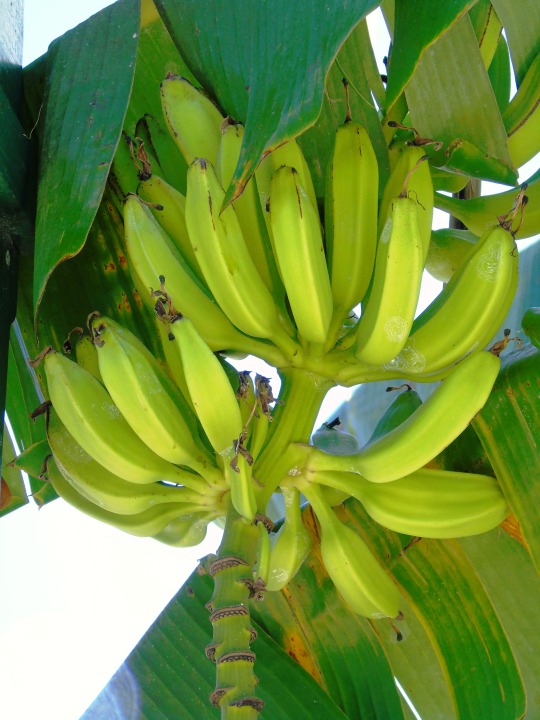
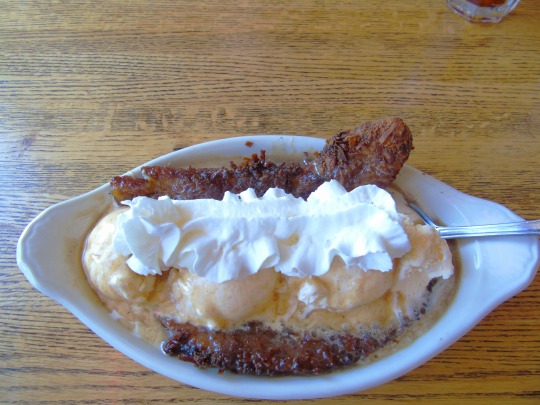
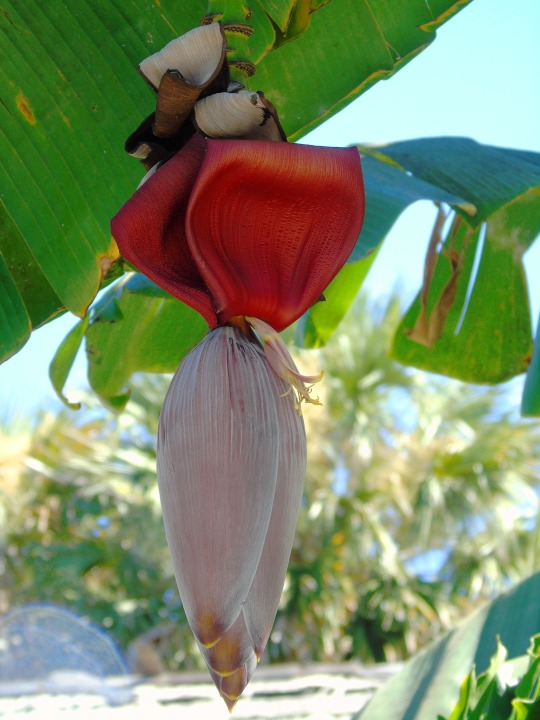



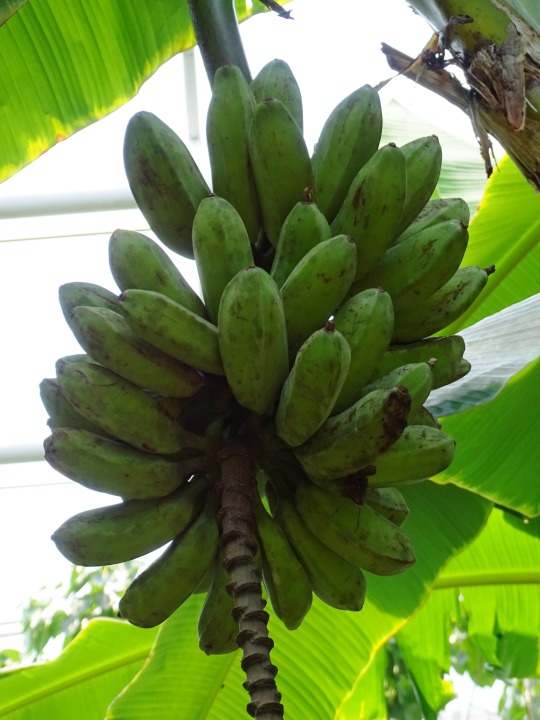
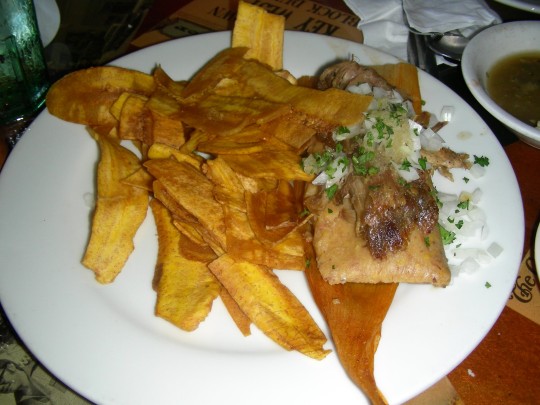

National Banana Day
Orange you glad I didn’t say banana? Enjoy some banana based treat like banana bread, a banana split, or even banana punch, and tell some terrible jokes.
National Banana Day is a bit like a heady mix of April Fool’s Day and Halloween (of course, without the trick or treating and vandalism) and with a helpful portion of healthy eating thrown in for good measure!
So, get ready to Go Bananas on National Banana Day!
History of National Banana Day
National Banana Day is a yearly event that is aimed at celebrating bananas in every conceivable sense of the word–because the banana is certainly a fruit worth celebrating!
While bananas are believed to have originated in Southeast Asia, mainly in India. They made their way west by Arab conquerors in 327 BC, and eventually bananas ended up in Europe. By the 1870s, bananas made their way to the Caribbean with missionaries, where the bananas were originally used for micro crops (which means growing one crop that helps another crop to grow). Eventually, though, bananas became a lucrative crop in their own right.
The popularity of bananas in the West grew throughout the late 1800s and early 1900s. As they became more affordable and less exotic, bananas were added to special dishes like the banana split, or used in baking recipes like banana bread.
Regarding the origins of National Banana Day, it is known that every year students at many prestigious American universities use National Banana Day as a way of celebrating this humble fruit as a lunchbox standard. On this day, they eat and share weird and wonderful banana concoctions (banana punch, anyone?), they dress as bananas and they generally go a bit…well…nuts.
And bananas too, of course.
National Banana Day is the perfect day to find solace in this world-renowned fruit that is useful and beneficial on so many levels. Happy National Banana Day!
National Banana Day Timeline
327 BC Bananas are brought from East to West
Arab conquerors bring this yellow fruit when Alexander the Great sends his armies to descend upon India.
1516 Bananas make a debut in the Caribbean
Brought by a Portuguese monk missionary, Friar Thomas de Berlanga, bananas reach the New World.
1834 Mass production of bananas begins
Banana trees are planted and production begins on a larger scale, especially in the Caribbean.
1907 First Banana Split is made
At his restaurant in Wilmington, Ohio, Ernest R. Hazard creates this new ice cream treat, the Banana Split which he hopes will attract college students to his shop.
1930s Banana Bread is invented
The first Banana Bread recipe is popularized when baking soda comes on the market in the United States.
How to Celebrate National Banana Day
Celebrating National Banana Day seems like a great time to get creative and enjoy a big load of fun! After all, there aren’t many days in the year when it is allowed to legitimately goof off and also have a little fruit-based fun, so why not take a (banana) leaf out of the students’ book and go a little bit bananas today?
Consider these ideas for celebrating National Banana Day:
Make a Banana Treat
Get creative in the kitchen and enjoy what monkeys have known all along–the banana is a fabulous food! Try these delicious treats to eat alone or share with friends:
Banana Split. A classic American tradition, the banana split uses the two halves of a sliced banana, some scoops of ice cream (usually one of each vanilla, chocolate and strawberry), and toppings such as hot fudge, whipped cream, nuts and cherries.
Banana Bread. Although the same recipe will bake more quickly when poured into muffin tins, there is something special about a dense loaf of warm banana bread. No matter what shape they are in, this is a great way to use up bananas that have gotten a bit over-ripe or brown, because over ripe bananas are sweeter.
Bananas Flambe. This French Caribbean treat is made from peeled banana halves fried in oil and then coated with rum and sugar. Serve with a scoop of vanilla ice cream, of course, it makes a delightful and dramatic show of a simple food!
Chocolate Covered Bananas. Channel that inner Arrested Development character (Bluth family, anyone?) by freezing some bananas and dipping them into chocolate–add nuts too!
Host a Banana Party
Throwing a party for National Banana Day is a great way to observe and celebrate this occasion. And certainly it’s not hard to decorate with a banana theme! Just make sure everything is yellow and green, including paper plates, napkins, balloons, tablecloths and streamers.
For an activity that doubles as a snack, provide a chocolate dipping station (aka fondue) or chocolate fountain where guests can dip slices of banana. For extra fun, supply other items for dipping, such as sprinkles, small candies, or mini marshmallows.
Learn Fun Facts About Bananas
In honor of National Banana Day, it might be a fun idea to share some information and facts about bananas with family and friends! Here are some bits of trivia to get started with:
A banana is technically not a fruit, it’s really a berry! This has to do with the fact that the seeds are located inside the flesh rather than on the outside.
Because they contain so much of the isotope Potassium-40, bananas are technically radioactive. The good news is that they can’t harm a person unless they are eating around 700 or more bananas per day for their entire lifetime.
Bananas cannot be grown simply from a seed, which means they are technically “sterile”. Instead, in order to propagate bananas, a piece from another banana plant has to be split and then grown, sort of like cloning.
The growth of popularity of bananas can be partially attributed to Jules Verne, the American author who wrote about the fruit in his book Around the World in 80 Days, which brought them to the forefront of many people’s minds.
Try Some New Recipes for National Banana Day
Other treats that can be served at a banana party, or simply taken to the office to share with coworkers, include banana muffins or banana bread (same recipe, but muffins are faster to bake and a bit easier to serve). Bananas also make a delicious and healthy additive to milkshakes or smoothies, they can be sliced up and put on top of a bowl of cereal in the morning, or they can be mashed up and put into pancakes.
Banana cake, banana ice cream, banana splits or banana pudding are all delicious and delightful recipes that can be enjoyed in honor of National Banana Day. Or try out a classic frozen banana dipped in chocolate as mentioned above.
Another treat made with bananas was also rumored to be a favorite of the pop singer, Elvis Presley, which was the peanut butter and banana sandwich
Listen to a Banana Playlist
There is no better day than National Banana Day to get jamming with a fruit-focused playlist on Spotify or another music hosting website. Play it at the above-mentioned Banana Party or listen alone. Try out a few of these songs or add a few other creative ones:
Day O [The Banana Boat Song] (1956) by Harry Belafonte
Thirty Thousand Pounds of Bananas (1974) by Harry Chapin
Yes, We Have No Bananas (1923) by Louis Prima
Hollaback Girl (2004) Gwen Stefani
Apples and Banana (1985) by Raffi
Banana in Your Fruit Basket (1991) by Bo Carter
Apples, Peaches, Bananas and Pears (1967) by The Monkees
Tell Some Banana Jokes
Get a little silly and have a laugh (or groan) with friends or family using a variety of banana jokes like these:
What kind of key can open a banana? A Mon-key!
Why did the banana go to the doctor? It wasn’t peeling well.
Why are bananas never lonely? Because they come in bunches.
What’s the easiest way to make a banana split? Cut it in half!
What do bananas say when they answer the phone? “Yellow?”
National Banana Day FAQs
Is there a National Banana Day?
Yes! National Banana Day is the day that people all over choose to celebrate everything to do with this delicious and nutritious yellow fruit.
When is National Banana Day?
National Banana Day is celebrated on the third Wednesday of April each year, so the date changes with the calendar.
Are Bananas good for you?
Emphatically yes! Tasty and nutritious, bananas contain fiber, protein, potassium, vitamins, manganese and more.
Do Bananas grow on trees?
Well, sort of. Though they appear to be trees, the plants that bananas grow on are actually classified as herbs that form an underground stem, called a rhizome. But technically, it’s not a tree!
How to keep Bananas fresh?
Keep your bananas in a cool, dry place. To keep them from getting overripe, bananas can be stored in the refrigerator.
Source
#Banana Cream Pie#Banana Split#Banana Annies#ice cream#dessert#restaurant#Tamal Cubano en Hoja#plantains#National Banana Day#USA#third Wednesday in April#19 April 2023#St. Augustine#Florida#rhizome#banana plant#banana flower#Zoo Zürich#Masoala Halle#flora#eating#original photography#travel#vacation#Switzerland#Zurich
0 notes
Photo

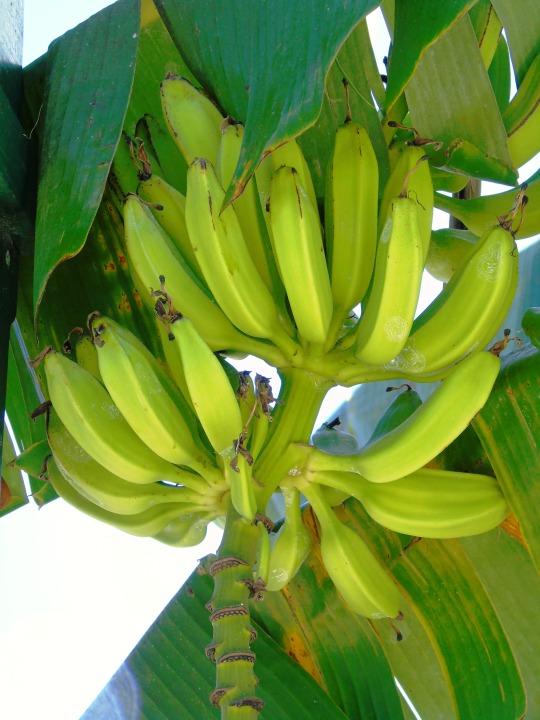


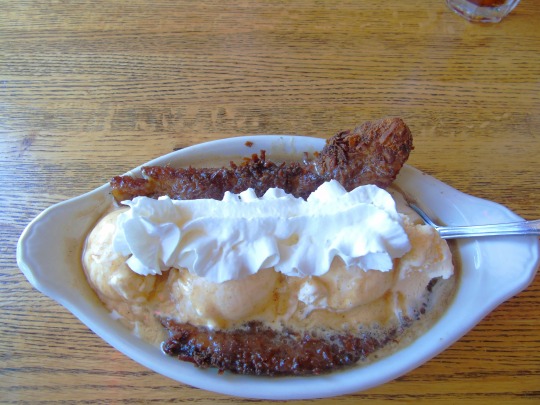
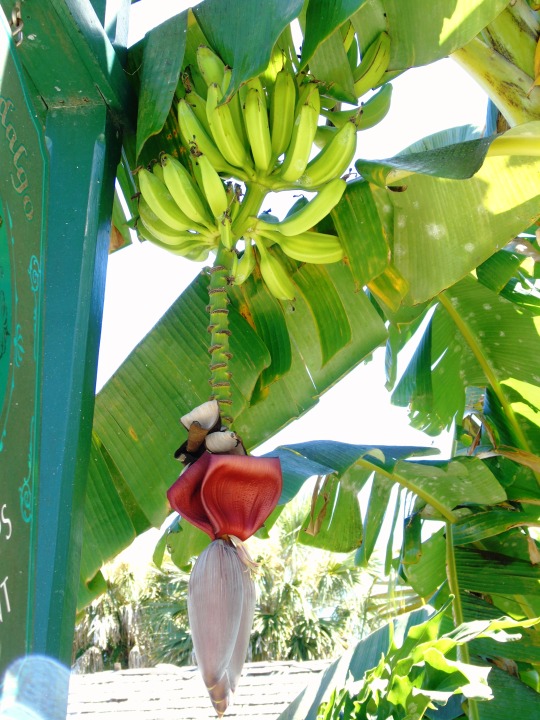

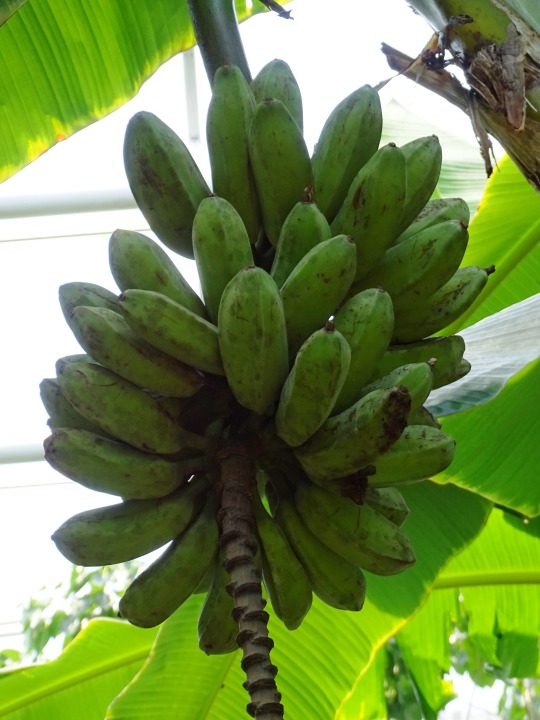


National Banana Lovers Day
Today we celebrate the banana—the most popular fruit in the United States and around the world. The average person eats about 100 of them a year, which comes out to about 25 to 33 pounds worth. They are the cheapest fruit and are also one of the most perishable. They may appear to grow on trees, but they actually grow on plants that have 10 to 20 feet high trunks. The banana plant is an herb—the largest herb plant, actually—and bananas are its fruit. The plant grows in the tropics.
Each banana is about 100 calories and is high in fiber and potassium, which are good for treating high blood pressure, ulcers, calcium loss, and some cancers. Bananas are also a good source of manganese, vitamin B6, and vitamin C. There are over 1,000 varieties of bananas, but the kind most eaten in the United States is the Cavendish. The Gros Michel was once the most commonly eaten, but in the 1950s it fell victim to a fungus that causes Panama disease, so farmers had to switch to the Cavendish.
Bananas are the oldest cultivated fruit and likely were first domesticated in Southeast Asia. Centuries later, shortly after Europeans arrived in the Western Hemisphere, they were brought from the Canary Islands to Hispaniola. They then spread to other islands, before making it to the mainland. They didn't become widespread in the United States until the end of the nineteenth century. They were so popular in American cities in the early twentieth century that banana peels on the ground became a nuisance and an issue that had to be dealt with. This led to the gag of slipping on banana peels, which was frequently featured in early movies.
Bananas were popularized in part by the United Fruit Company, which was founded in the late nineteenth century, and is now known as Chiquita. They encouraged people to eat bananas with milk and corn flakes, and they put out banana recipe books until the end of the 1950s. The books oftentimes contained adventurous recipes and aimed to get people to eat bananas at every meal. They cast the banana not only as something sweet but also as something similar to a vegetable, like a potato. One example of a recipe from the book is ham banana rolls with cheese sauce. Nowadays, bananas are still eaten in many different ways. Besides being enjoyed plain, they may be fried, may be included in sandwiches, and may be used in pies, puddings, muffins, breads, and cakes—among other things. On National Banana Lovers Day, the sky's the limit as to what can be done with them!
How to Observe National Banana Lovers Day
You should be eating as many bananas and foods made with bananas as possible today. While doing so, perhaps you could read Banana: The Fate of the Fruit That Changed the World. You could pick up an old United Fruit/Chiquita recipe book to help you decide what to eat, but we have also put together some recipe ideas for you here as well:
Elvis Presley's fried peanut butter and banana sandwich
Grilled banana s'mores
Fried sweet bananas
Honey-rum grilled bananas
Eat bananas with corn flakes and milk, just as United Fruit once encouraged everyone to do.
Try bananas in milk, with a little bit of sugar and a few drops of vanilla extract.
Banana bread
Banana muffins
Banana cake
Banana split
Banana cream pie
Banana pudding
Banana cocktails
Banana smoothies
Make some matooke, which is the most popular banana dish in the world and from Uganda.
Make Bananas Foster, a New Orleans specialty.
Make the original United Fruit ham banana rolls with cheese sauce!!!
Source
#Banana Split#Banana Nut Donut#Banana Annies#ice cream#travel#USA#Strawberry Banana Rendezvous#restaurant#St. Augustine#vacation#flora#flower#National Banana Lovers Day#NationalBananaLoversDay#27 August#Chocolate Banana Milkshake#Zoo Zürich#Masoala Hall#Switzerland#original photography#fruit#tourist attraction#landmark#Canada#Schweiz#Zurich
14 notes
·
View notes
Photo










World Turtle Day
Turtles and tortoises are common sightings in parables, stories, and pop culture and we celebrate World Turtle Day on May 23 to honor these resilient animals. Turtles and tortoises are associated with wisdom and perseverance. They are reptiles that are found in many environments all around the world. These creatures play an important role in their respective ecosystems. They dig holes that are inhabited by other creatures and keep our beaches clean by feeding on dead fish that wash up on the shores. They maintain an ecological balance and, therefore, it’s important to conserve these gentle animals.
History of World Turtle Day
It’s easy to get confused between a tortoise and turtle. The main difference between the two is that turtles sometimes live in the water, while tortoises only live on the land. Turtles live up to the age of 40 and have streamlined and mostly flat shells. On the other hand, tortoises can live up to 300 years and they have larger, more domed shells. You will mostly find turtles in the sea, while tortoises inhabit dense jungles and grasslands.
Turtles and tortoises are two different animals but this day is dedicated to celebrating and protecting both. The day was first celebrated by American Tortoise Rescue in 2002 and it highlights the suffering and the dwindling numbers of these animals due to human interference and environmental hazards. Schools, rescue centers, and nature lovers all come together on this day to learn more about these creatures and pledge their allegiance to help save them.
American Tortoise Rescue was created by Susan Tellem and Marshall Thompson. They organize charity drives and actively work to spread awareness for the critical conditions of these shelled reptiles. The couple is known for their humane treatment of all animals, including reptiles. Since its establishment in 1990, American Tortoise Rescue has given homes to over 4,000 tortoises and turtles. The organization also assists their local law enforcement in guarding turtles’ natural habitats and tending to them when they are sick.
World Turtle Day timeline
1547
“The Tortoise and the Hare”
The first versions of Aesop’s fable “The Tortoise and the Hare” are published.
1990
ATR is Established
Susan Tellem and Marshall Thompson establish American Tortoise Rescue.
2002
First World Turtle Day
The first World Turtle Day is celebrated by ATR.
2011
Save the Sea Turtle Stamp
USPS prints its first batch of Save the Sea Turtle Stamps and donates the proceedings from it to the species’ conservation.
World Turtle Day FAQs
When is World Turtle Day celebrated?
It is celebrated every year on May 23.
Who is the turtle god?
According to Hinduism, ‘Kurma’ is the turtle god.
Why do we celebrate World Turtle Day
World Turtle Day is celebrated to increase awareness about these creatures and ensure their protection.
How to celebrate
Adopt a turtle
Donate to turtle conservation centers
Volunteer to help out
Adopt a turtle or a tortoise from the rescue shelter. These creatures make for hassle-free pets. They do need much attention and are perfect pets for young children!
You may want to donate to local tortoise conservation centers as well as American Tortoise Rescue. No amount is small and your donation will go a long way!
You could sign up at a turtle rescue center and volunteer to help out. Volunteers can help out by tending to sick turtles, feeding them, etc.!
5 Facts About Turtles That Will Blow Your Mind
The shell is part of the skeleton
It is one of the most illegally traded animals
There are 300 species of turtles
Turtles are cold-blooded animals
They are one of the oldest creatures to be found
The shell is the most distinguished part of a turtle and experts say that it is made of 50 bones!
Turtles and tortoises are illegally traded for their meat, shell, and skin — this has led to the endangerment of the creatures.
Turtles may all look the same to us but there are actually 300 species of them — of these, 129 are endangered.
Turtles are cold-blooded animals with a slow metabolism — their long lifespan is often attributed to this.
The first turtles existed 200 million years ago alongside dinosaurs!
Why We Love World Turtle Day
It’s socially responsible
It promises a better future
A special day for animal lovers
We inhabit the planet with countless different creatures. World Turtle Day reminds us to be respectful of the ecological balance and sensitive to our animal friends.
World Turtle Day promises a better future where humans and turtles can coexist peacefully. Protecting these animals means protecting our own future.
Animal lovers look forward to this day to do their bit for the conservation of turtles and tortoises. It’s a great day to volunteer, raise awareness, and donate.
Source
#Bronx Zoo#my favorite zoo#New York City#the Bronx#summer 2018#2019#original photography#flora#fauna#animal#Zoo Zürich#Zurich#Schweiz#Switzerland#Masoala Hall#indoor#outdoor#Radiated tortoise#red-eared slider#Giant South American River Turtle#Aldabra giant tortoise#reflection#Galápagos tortoise#World Turtle Day#WorldTurtleDay#23 May#travel#vacation#tourist attraction#landmark
7 notes
·
View notes
Photo










National Banana Day
Orange you glad I didn’t say banana? Enjoy some banana based treat like banana bread, a banana split, or even banana punch, and tell some terrible jokes.
National Banana Day is a bit like a heady mix of April Fool’s Day and Halloween (of course, without the trick or treating and vandalism) and with a helpful portion of healthy eating thrown in for good measure!
So, get ready to Go Bananas on National Banana Day!
History of National Banana Day
National Banana Day is a yearly event that is aimed at celebrating bananas in every conceivable sense of the word–because the banana is certainly a fruit worth celebrating!
While bananas are believed to have originated in Southeast Asia, mainly in India. They made their way west by Arab conquerors in 327 BC, and eventually bananas ended up in Europe. By the 1870s, bananas made their way to the Caribbean with missionaries, where the bananas were originally used for micro crops (which means growing one crop that helps another crop to grow). Eventually, though, bananas became a lucrative crop in their own right.
The popularity of bananas in the West grew throughout the late 1800s and early 1900s. As they became more affordable and less exotic, bananas were added to special dishes like the banana split, or used in baking recipes like banana bread.
Regarding the origins of National Banana Day, it is known that every year students at many prestigious American universities use National Banana Day as a way of celebrating this humble fruit as a lunchbox standard. On this day, they eat and share weird and wonderful banana concoctions (banana punch, anyone?), they dress as bananas and they generally go a bit…well…nuts.
And bananas too, of course.
National Banana Day is the perfect day to find solace in this world-renowned fruit that is useful and beneficial on so many levels. Happy National Banana Day!
National Banana Day Timeline
327 BC Bananas are brought from East to West
Arab conquerors bring this yellow fruit when Alexander the Great sends his armies to descend upon India.
1516 Bananas make a debut in the Caribbean
Brought by a Portuguese monk missionary, Friar Thomas de Berlanga, bananas reach the New World.
1834 Mass production of bananas begins
Banana trees are planted and production begins on a larger scale, especially in the Caribbean.
1907 First Banana Split is made
At his restaurant in Wilmington, Ohio, Ernest R. Hazard creates this new ice cream treat, the Banana Split which he hopes will attract college students to his shop.
1930s Banana Bread is invented
The first Banana Bread recipe is popularized when baking soda comes on the market in the United States.
How to Celebrate National Banana Day
Celebrating National Banana Day seems like a great time to get creative and enjoy a big load of fun! After all, there aren’t many days in the year when it is allowed to legitimately goof off and also have a little fruit-based fun, so why not take a (banana) leaf out of the students’ book and go a little bit bananas today?
Consider these ideas for celebrating National Banana Day:
Make a Banana Treat
Get creative in the kitchen and enjoy what monkeys have known all along–the banana is a fabulous food! Try these delicious treats to eat alone or share with friends:
Banana Split. A classic American tradition, the banana split uses the two halves of a sliced banana, some scoops of ice cream (usually one of each vanilla, chocolate and strawberry), and toppings such as hot fudge, whipped cream, nuts and cherries.
Banana Bread. Although the same recipe will bake more quickly when poured into muffin tins, there is something special about a dense loaf of warm banana bread. No matter what shape they are in, this is a great way to use up bananas that have gotten a bit over-ripe or brown, because over ripe bananas are sweeter.
Bananas Flambe. This French Caribbean treat is made from peeled banana halves fried in oil and then coated with rum and sugar. Serve with a scoop of vanilla ice cream, of course, it makes a delightful and dramatic show of a simple food!
Chocolate Covered Bananas. Channel that inner Arrested Development character (Bluth family, anyone?) by freezing some bananas and dipping them into chocolate–add nuts too!
Host a Banana Party
Throwing a party for National Banana Day is a great way to observe and celebrate this occasion. And certainly it’s not hard to decorate with a banana theme! Just make sure everything is yellow and green, including paper plates, napkins, balloons, tablecloths and streamers.
For an activity that doubles as a snack, provide a chocolate dipping station (aka fondue) or chocolate fountain where guests can dip slices of banana. For extra fun, supply other items for dipping, such as sprinkles, small candies, or mini marshmallows.
Learn Fun Facts About Bananas
In honor of National Banana Day, it might be a fun idea to share some information and facts about bananas with family and friends! Here are some bits of trivia to get started with:
A banana is technically not a fruit, it’s really a berry! This has to do with the fact that the seeds are located inside the flesh rather than on the outside.
Because they contain so much of the isotope Potassium-40, bananas are technically radioactive. The good news is that they can’t harm a person unless they are eating around 700 or more bananas per day for their entire lifetime.
Bananas cannot be grown simply from a seed, which means they are technically “sterile”. Instead, in order to propagate bananas, a piece from another banana plant has to be split and then grown, sort of like cloning.
The growth of popularity of bananas can be partially attributed to Jules Verne, the American author who wrote about the fruit in his book Around the World in 80 Days, which brought them to the forefront of many people’s minds.
Try Some New Recipes for National Banana Day
Other treats that can be served at a banana party, or simply taken to the office to share with coworkers, include banana muffins or banana bread (same recipe, but muffins are faster to bake and a bit easier to serve). Bananas also make a delicious and healthy additive to milkshakes or smoothies, they can be sliced up and put on top of a bowl of cereal in the morning, or they can be mashed up and put into pancakes.
Banana cake, banana ice cream, banana splits or banana pudding are all delicious and delightful recipes that can be enjoyed in honor of National Banana Day. Or try out a classic frozen banana dipped in chocolate as mentioned above.
Another treat made with bananas was also rumored to be a favorite of the pop singer, Elvis Presley, which was the peanut butter and banana sandwich
Listen to a Banana Playlist
There is no better day than National Banana Day to get jamming with a fruit-focused playlist on Spotify or another music hosting website. Play it at the above-mentioned Banana Party or listen alone. Try out a few of these songs or add a few other creative ones:
Day O [The Banana Boat Song] (1956) by Harry Belafonte
Thirty Thousand Pounds of Bananas (1974) by Harry Chapin
Yes, We Have No Bananas (1923) by Louis Prima
Hollaback Girl (2004) Gwen Stefani
Apples and Banana (1985) by Raffi
Banana in Your Fruit Basket (1991) by Bo Carter
Apples, Peaches, Bananas and Pears (1967) by The Monkees
Tell Some Banana Jokes
Get a little silly and have a laugh (or groan) with friends or family using a variety of banana jokes like these:
What kind of key can open a banana? A Mon-key!
Why did the banana go to the doctor? It wasn’t peeling well.
Why are bananas never lonely? Because they come in bunches.
What’s the easiest way to make a banana split? Cut it in half!
What do bananas say when they answer the phone? “Yellow?”
Source
#Banana Annies#dessert#food#restaurant#flora#Zoo Zürich#Zurich#Masoala Hall#Schweiz#Switzerland#St. Augustine#Florida#fruit#travel#vacation#tourism#National Banana Day#third Wednesday in April#USA#20 April 2022#Miami Beach Botanical Garden#Banana Split#ice cream#Tamal Cubano en Hoja#flower#tourist attraction#New Orleans#Louisiana#day trip#banana plant
0 notes
Photo










National Banana Day
National Banana Day is centered in Ireland, where it was first celebrated in 2017. It is promoted by Fyffes, a fresh produce and fruit importing company, and has been acknowledged by other fruit companies such as Dole Food Company and Chiquita Brands International. It supports a national drive to encourage healthy eating, especially for children, and reminds shoppers to think of bananas as a nutritious and natural food that they can add to meals or eat as convenience food. It also highlights how the banana is fun and versatile.
The banana is the most popular fruit in the United States and around the world. The average person eats about 100 of them a year, which comes out to about 25 to 33 pounds worth. They are the cheapest fruit and are also one of the most perishable. They may appear to grow on trees, but they actually grow on plants that have 10 to 20 feet high trunks. The banana plant is an herb—the largest herb plant, actually—and bananas are its fruit. The plant grows in the tropics.
Each banana is about 100 calories and is high in fiber and potassium, which are good for treating high blood pressure, ulcers, calcium loss, and some cancers. Bananas are also a good source of manganese, vitamin B6, and vitamin C. There are over 1,000 varieties of bananas, but the kind most eaten in the United States is the Cavendish. The Gros Michel was once the most commonly eaten, but in the 1950s it fell victim to a fungus that causes Panama disease, so farmers had to switch to the Cavendish.
Bananas are the oldest cultivated fruit and likely were first domesticated in Southeast Asia. Centuries later, shortly after Europeans arrived in the Western Hemisphere, they were brought from the Canary Islands to Hispaniola. They then spread to other islands, before making it to the mainland. They didn't become widespread in the United States until the end of the nineteenth century. They were so popular in American cities in the early twentieth century that banana peels on the ground became a nuisance and an issue that had to be dealt with. This led to the gag of slipping on banana peels, which was frequently featured in early movies.
Bananas were popularized in part by the United Fruit Company, which was founded in the late nineteenth century, and is now known as Chiquita. They encouraged people to eat bananas with milk and corn flakes, and they put out banana recipe books until the end of the 1950s. The books oftentimes contained adventurous recipes and aimed to get people to eat bananas at every meal. They cast the banana not only as something sweet but also as something similar to a vegetable, like a potato. One example of a recipe from the book is ham banana rolls with cheese sauce.
Nowadays, bananas are still eaten in many different ways. Besides being enjoyed plain, they may be fried, may be included in sandwiches, and may be used in pies, puddings, muffins, bread, and cakes—among other things. Although they can be eaten in many ways, having them plain or in a healthy recipe is the preferred way to enjoy them on National Banana Day!
How to Observe National Banana Day
Celebrate the day by eating bananas! Eat them as a snack or as part of a meal. Eat them plain or use them to make something healthy!
Source
#Banana Annies#National Banana Day#NationalBananaDay#21 April 2021#third Wednesday in April#Banana Split#flower#flora#St. Augustine#Florida#Zoo Zürich#Zurich#Schweiz#Switzerland#Masoala Hall#food#dessert#Miami Beach Botanical Garden#banana plant#New Orleans#original photography#vacation#travel#daytrip#Tamal Cubano en Hoja#plantains#restaurant#summer vacation
0 notes
Text
Heute haben wir den entführten Wirt im Zoo getroffen. Dort konnten wir ausführlich und unauffällig besprechen, was ihm widerfahren ist.
Und weil wir schon mal dort waren, haben wir natürlich auch noch den ganzen Zoo angeschaut. Zu den Highlights gehörten die krähenden Pfaue, die Tiere der Savanne, oder die irrsinnig tropisch-feucht-heisse Masoala-Halle.










0 notes
